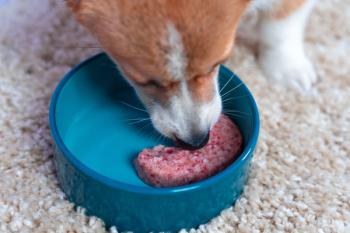
Journal Scan: Omega-3 fatty acids: How much is too much?
These researchers sought to describe the metabolic differences and potential adverse effects of the omega-3 fatty acids.
Untitled Document
Why they did it
These researchers sought to describe the metabolic differences and potential adverse effects of the omega-3 fatty acids, primarily eicosapentaenoic acid (EPA) and docosahexaenoic acid (DHA).
What they did
The authors provide an overview of the metabolism and clinical utility of EPA and DHA as nutraceuticals for treating a variety of conditions such as hypertriglyceridemia and dermatologic, cardiovascular, renal, and orthopedic diseases. Unlike drugs, high doses of these compounds are required to treat many of these diseases, and target ranges vary depending on the disease being treated. Dose ranges fall between 50 and 220 mg/kg, with the lower doses most often being used for inflammatory, renal, and cardiac diseases.
The authors note that adequate amounts of these fatty acids are not present in many therapeutic commercial diets, so supplementation is still often recommended. In addition, some diets may contain alpha-linolenic acid (ALA) as the omega-3 fatty acid. ALA may be converted into EPA and DHA; however, this conversion is not very efficient in mammalian species.
The authors note that care should be exercised when evaluating reviews, supplements, or diets that express fatty acid content as a ratio of omega-6 to omega-3 fatty acids as these do not provide absolute omega-3 values, and the omega-3 fatty acid dose is calculated by using the total of ALA, EPA, and DHA content.
Adverse effects may be associated with the use of these nutraceuticals and are likely to be dose-dependent.
Possible adverse effect
Rationale for concern
Platelet activation
- Metabolism of EPA and DHA results in production of thromboxane A3, which is a less potent platelet activator than thromboxane A2 and may, therefore, affect platelet activation and coagulation. Studies in the veterinary literature thus far have shown this to have little if any clinical impact, but the total amount of omega-3 fatty acid used was not clear in all studies.
Gastrointestinal effects
- Some patients may have diarrhea as a result of supplementation with these supplements because of poor digestion of fatty acids. Slow transition to higher doses, the addition of fiber to the diet, as well as the use of antibiotics, a prebiotics or probiotics may be considered in these cases.
- Increased risk of pancreatitis has been cited as a concern with their use, but “there are no reports of omega-3 fatty acid or fish oil supplements causing pancreatitis in dogs, cats, or humans.”
Wound healing
- The anti-inflammatory effects of fatty acids would be expected to delay the inflammatory phase of wound healing, but this has not been supported in veterinary research thus far. The authors note, however, that effects on wound healing may depend on the amount of fatty acid supplemented, the duration of supplementation, and the severity of the wound.
- Caution should be exercised when using these supplements in the perioperative period.
Lipid peroxidation
- Peroxidation of EPA and DHA may lead to the formation of free radicals and subsequent damage to proteins and DNA. Peroxidation may occur within the product itself or within the body and may clinically manifest as a vitamin E deficiency (i.e. muscle weakness, retinal degeneration, and steatitis).
- Vitamin E may be added to these products to combat this problem and increase freshness and shelf-life.
Toxin exposure
- Fish oils may increase the risk of exposure to heavy metals such as mercury or chemicals such as polychlorinated biphenyls. While these risks are low, they may be seen more often in cats because of the frequency of feeding fish-based diets. Clinical signs are primarily neurologic.
Altered immune function
- Altered immune function may be a concern when suppressing the inflammatory response with fatty acids. Neutrophil function may be suppressed, but there is no conclusive data on whether this is clinically relevant.
Insulin sensitivity
- Supplementation may affect insulin sensitivity, but more research is needed in this area.
- Caution should be exercised when using these products in patients with diabetes mellitus.
Weight gain
- Calories in the oil should be factored into daily caloric consumption and may be a concern when treating obese or obesity-prone patients with large amounts of fatty acids.
Nutrient-drug interaction
- Supplementation may exacerbate the adverse effects of some drugs. This may be especially true for drugs that alter platelet function such as aspirin, NSAIDs, or clopidogrel, so caution should be exercised when using these drugs concurrently.
Take-home message
While omega-3 fatty acids have numerous benefits and clinical indications, as with any nutraceutical, caution should be exercised to avoid adverse reactions, and careful patient selection should be employed. The authors state that The National Research Council publication on Nutrient Requirements of Dogs and Cats has established 2,800 mg/1,000 kcal of diet as a safe upper limit of the combined amounts of EPA and DHA, which is equivalent to 370 mg/kg0.75 in dogs. For example, in a 10-kg dog, the safe upper limit would be 2,080 mg. They also state that not enough published data are available to establish a safe upper limit in cats.
Lenox CE, Bauer JE. Potential adverse effects of omega-3 fatty acids in dogs and cats. J Vet Intern Med 2013;27:217-226.
Link to the abstract:
Newsletter
From exam room tips to practice management insights, get trusted veterinary news delivered straight to your inbox—subscribe to dvm360.






